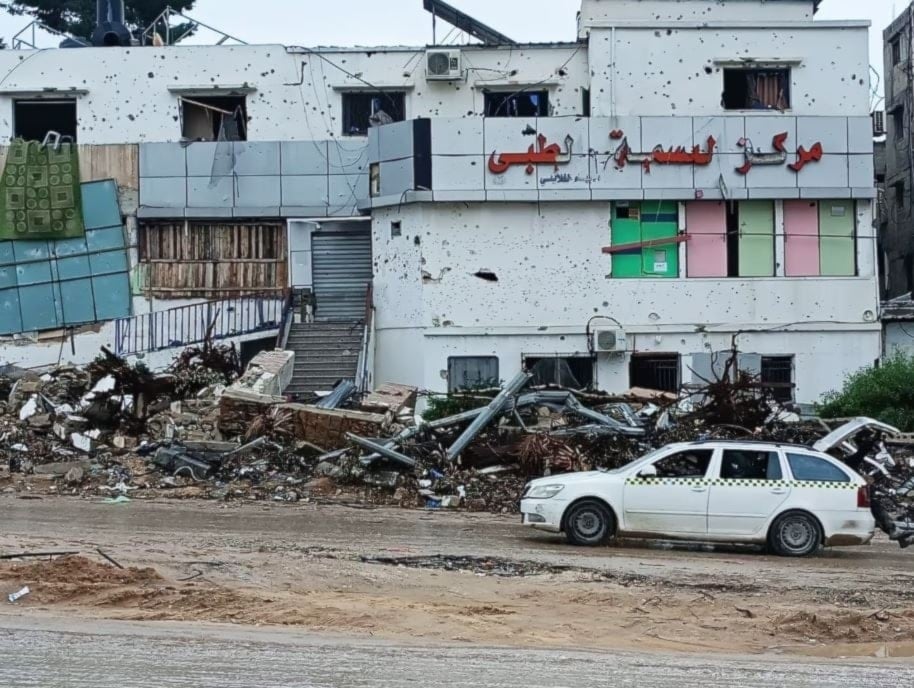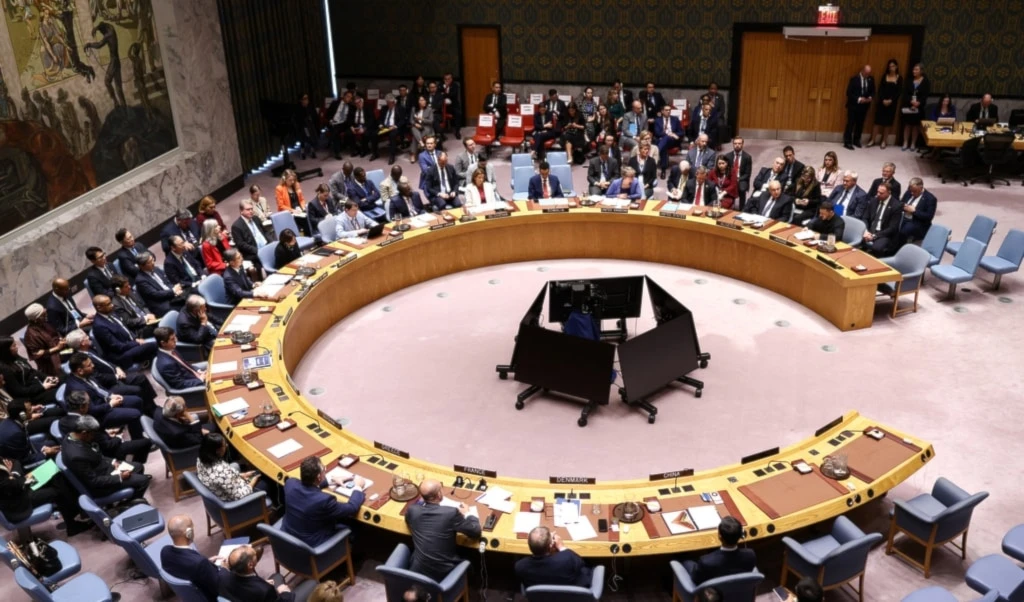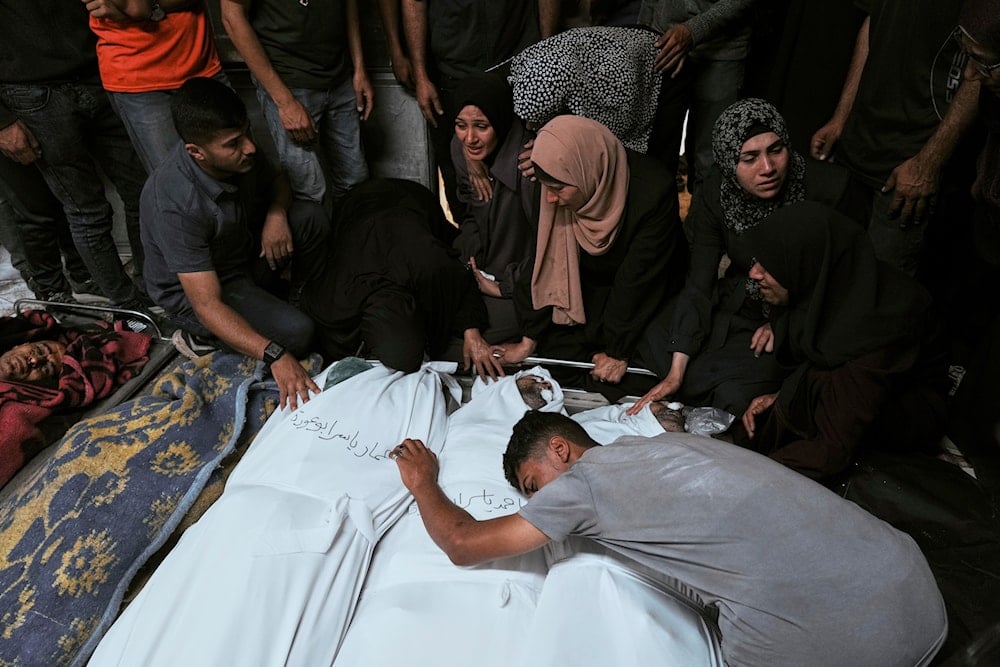Eradicating the roots: How ‘Israel’ wages war on fertility in Gaza
This is not just a detail in the genocide in Gaza: How is “Israel” waging a covert war on Palestinian fertility?
-

Between October 2023 and June 2024, 14 fertility clinics were bombed, including embryo banks that stored over 20,000 genetic samples, according to a joint report by the World Health Organization (WHO) and UNICEF (Al Mayadeen)
In a remote corner of the Nuseirat refugee camp in Gaza, where life and death collide relentlessly, a Palestinian woman sits on the rubble of what was once her home. She holds her infant in her arms and stares into a horizon thick with dust. Her eyes are not searching for an approaching funeral or for much-delayed humanitarian aid. Instead, they peer at a scorched crater kilometers away, where before the Israeli genocide began lay the Basma Fertility Center.
Here, in December 2023, that woman’s journey with hope came to an end when an Israeli shell destroyed a distant glass container that held what was meant to become her second child, a frozen embryo which for years had waited for a chance at life. That woman not only lost the possibility of giving birth again; she lost everything the future meant.
Shattered Wombs: Stories of biological loss
-

In December 2023, an Israeli strike hit the center, blowing up the embryo lab and exposing five tanks containing liquid nitrogen.
In Gaza’s skies, the war has shifted from a battle over land to a war on the very seeds of life. 17 years ago, Dr. Bahaa al-Din al-Ghalayini (73), an obstetrician-gynecologist and infertility consultant trained in Cambridge, founded the Basma Fertility and IVF Center. The center became a beacon of hope for thousands of Palestinian families struggling with fertility issues, operating as an advanced medical institution, forming partnerships with European and Arab centers, and keeping pace with technological and scientific advancements.
But in December 2023, an Israeli strike hit the center, blowing up the embryo lab and exposing five tanks containing liquid nitrogen, stored in a corner of Embryo Unit 29. Dr. al-Ghalayini describes the moment with a broken heart:
“When the ultra-cold liquid evaporated, the temperature inside the tanks rose, killing more than 4,000 embryos and over 1,000 other samples of sperm and unfertilized eggs.” These embryos had been preserved at a stable temperature of -180°C.
Saba Jaafarawi is one of the thousands of women who lost their hope of motherhood. She had undergone three years of fertility treatment, a psychologically grueling journey. The process of extracting eggs from her ovaries was painful, and the hormone injections had severe side effects.
Despite all the suffering, Saba held on to fragile hope, but the bombing ended everything. At least half of the couples, according to al-Ghalayini, will no longer have another chance to conceive, as they are now unable to produce viable sperm or fertilizable eggs.
Between poverty and hope: The fragile reality of childbearing in Gaza
-

The report also highlighted unprecedented harm inflicted on pregnant women, breastfeeding mothers, and new mothers in Gaza, with irreparable consequences on reproductive potential.
Before the war, Gaza, despite its dire economic conditions, was home to a society that celebrated large families. According to data, nearly half of the population in the Strip is under the age of 18, and fertility rates were high, at 3.38 births per woman (compared to 1.63 in Britain).
In a previous study by Dr. Raed Salha, a professor of human geography at the Islamic University of Gaza, the fertility rate dropped from 6.9 children per woman in 1997 to 5 children in 2020, yet remained above global averages.
Dr. al-Ghalayini explains, “Despite the poverty in the Strip, couples suffering from infertility resort to IVF, and for this dream, they sell household appliances like TVs or jewelry to afford the treatment.” Before the war, fertility treatments were widely available in Gaza, with at least nine clinics offering IVF procedures. The Basma Center alone received between 2,000 and 3,000 patients each month.
The targeting of Basma was not an isolated incident. The UN fact-finding committee reported that “Israel” “deliberately attacked and destroyed” the main fertility center in Gaza.
Between October 2023 and June 2024, 14 fertility clinics were bombed, including embryo banks that stored over 20,000 genetic samples, according to a joint report by the World Health Organization (WHO) and UNICEF.
The UN committee concluded that Israeli forces intentionally attacked and destroyed the clinic, including all stored reproductive materials meant for future pregnancies, describing the destruction as an effort “to prevent births among Palestinians in Gaza, an act of genocide.”
The report also highlighted unprecedented harm inflicted on pregnant women, breastfeeding mothers, and new mothers in Gaza, with irreparable consequences on reproductive potential.
Fertility as a battlefield
-

The population growth rate, estimated at 2.7% in 2023, dropped to below 1% in 2024.
On October 7, 2023, around 50 Palestinian women were in the middle of hormone injection cycles, preparing for egg retrieval at IVF clinics, until the war interrupted their treatment and robbed them of their chances at motherhood.
According to the Palestinian Center for Human Rights, more than 50,000 pregnant women currently sheltering in displacement centers lack adequate food and proper, safe healthcare. About 15% are expected to face complications during pregnancy and childbirth that require unavailable medical support.
The Israeli war on Gaza hasn’t been limited to military bombardment. According to reports by the Palestinian Center for Human Rights, “Israel” has banned the import of contraceptives into Gaza since 2022, under the pretext of “preventing terrorism financing.” Meanwhile, Human Rights Watch has documented cases of forced miscarriages among Palestinian female detainees.
The impact goes beyond horrifying statistics about maternal deaths. The aggression has significantly altered Gaza’s demographic composition. The population growth rate, estimated at 2.7% in 2023, dropped to below 1% in 2024, with forecasts of birth and fertility rates approaching zero due to deteriorating conditions, fears for mothers’ and babies’ health, and an unprecedented decline in new marriages.
Data shows that the total fertility rate for Palestinian women in Gaza was approximately 3.9 births per woman, but this is expected to continue dropping if the aggression persists, meaning the Strip’s population is unlikely to surpass 2.3 million between 2023–2025, compared to earlier estimates projecting it would exceed 2.4 million by 2025.
Israeli demographic engineering: From rhetoric to practice
-

This photo taken by Dr. al-Ghalayini shows some of the damage that befell the Basma Fertility Clinic.
To understand the context of these attacks more deeply, one must examine what is known as Israeli demographic engineering, which are systematic policies designed to maintain a Jewish majority and diminish Palestinian presence, particularly in al-Quds and other areas.
Studies indicate that the so-called “Palestinian demographic bomb” has long been an obsession for Israeli policymakers, pushing them to adopt strict demographic strategies. These include restricting the reunification of Palestinian families, revoking residency permits, imposing construction limitations, and demolishing homes, all aimed at keeping the Palestinian population in al-Quds, for example, under 30% within the municipal boundaries of the city.
Researchers argue that destroying embryo preservation labs does not merely mean the loss of one potential child, but the loss of entire genetic lineages that could span generations, underscoring the deep demographic implications of such policies.
Maps and reports show that Israeli aggressions follow a documented pattern in Israeli military targeting plans, focusing on densely populated areas such as the Shuja’iyya neighborhood, where there are three fertility clinics per square kilometer.
These attacks directly impact pregnant women through death, injury, or inhalation of toxic gases. They also inflict severe psychological and physical harm caused by extreme fear and anxiety, and depriving women of gender-specific protections. Additionally, they weaken medical services for pregnant women and make safe access to care extremely difficult, forcing many to give birth at home or in shelters, conditions that increase the risks of medical complications and intensify the suffering and psychological burden on this vulnerable group.
The economics of destruction: The high cost of loss
Behind the scenes of destruction lies a calculated machine: Israeli assaults are executed with precise cost-benefit calculations rather than randomness. For example, a single bomb dropped from an F-35 fighter jet costs approximately $3.5 million, a sum roughly equivalent to Gaza’s healthcare budget for 18 months, according to Palestinian economic estimates.
This massive investment in destroying healthcare infrastructure aims not only to paralyze the health system but to create long-term financial incapacity, making the reconstruction of the sector a nearly impossible task. As a result, pregnancy and childbirth become dangerous endeavors plagued by poverty and disease due to the lack of basic medical care.
On a broader scale, these attacks have redrawn Gaza’s population map. The population density has declined notably, with a 6% drop in population, about 160,000 people, since the war began, due to mass killings and forced displacement. The population now stands at approximately 2.1 million, over half of whom are children under 18.
Israeli policies have transformed Gaza from a historically densely populated region (over 5,500 people per km²) into an isolated “human reserve” devoid of the biological and social conditions necessary for life, due to the collapse of healthcare and economic infrastructure, high poverty and unemployment rates, and rising numbers of widows and orphans, threatening the long-term survival of Palestinian society in the Strip.
Amid these systematic attempts to eradicate reproductive health in Gaza, exceptional grassroots initiatives have emerged, highlighting the resilience of Palestinian women. International organizations have documented how midwives and healthcare workers continued to provide care despite extreme risks and resource shortages. They adopted alternative and primitive solutions to assist births and care for pregnant women, using household tools and natural disinfectants in the absence of basic medical supplies.
These community efforts, which could be called the “resistance’s womb network,” have been especially prominent in refugee camps, where midwives collaborated with families to find alternatives to IVF after fertility centers were bombed, resulting in the loss of thousands of embryos and genetic samples.
In an interview, Dr. al-Ghalayini remarked that despite the destruction of the clinic, “the professional and human spirit we built over decades will not die,” adding, “We know with all our being what those 5,000 potential lives meant, to the fathers and mothers, for the future, and for the past.”
What is emerging in Gaza today could be described as “resistance through childbirth,” a notion some describe as a “Palestinian weapon threatening the Israeli project.” Despite war, siege, and destruction, “the number of Palestinians has doubled.” At the entrance of the destroyed Al-Shifa Hospital, a handwritten message scrawled on a half-collapsed wall reads: “Every womb that gives birth here is a second birth certificate for Palestine.”
Resilience in the face of demographic engineering: Motherhood as battlefield
-

Motherhood is no longer just a personal, intimate experience, it has become an existential cause for an entire society.
When studying Israeli demographic engineering, one sees that it extends beyond direct military warfare on Gaza. A study by the Palestinian Policy Network describes the Israeli entity as subjecting Palestinians across all of historic Palestine to a complex regime of demographic control.
Through strategic fragmentation of the Palestinian people and a suite of segregation laws, “Israel” continues to revoke Palestinian residency rights, deny family reunification across the Green Line, strip people of citizenship, and enforce forced displacement [outside Palestine]. Within this framework, the targeting of fertility centers and embryo banks in Gaza becomes part of a broader demographic control strategy.
This is not the first aggression on Gaza, but it is the first to systematically target the future of its next generations. As Dr. Raed Salha from the Islamic University in Gaza notes, “There’s a component tied to the demographic struggle. Today, the Israeli occupation is trying to increase its numbers while simultaneously settling on Palestinian land.”
Thus, the female body becomes a battlefield, the womb a trench, and fertility a weapon. Motherhood is no longer just a personal, intimate experience, it has become an existential cause for an entire society. Every child born is a challenge to death, every baby that survives a triumph of hope over despair.
Beneath the rubble and smoke of destroyed homes, another story unfolds in Gaza, the story of women who see their bodies as the final frontlines of resistance, who view childbirth not only as a biological act but a political one. As written on the wall of the destroyed Al-Shifa Hospital: “Every womb that gives birth here is a second birth certificate for Palestine.”
In a world where fertility becomes a battlefront, embryos are treated as spoils, and motherhood becomes a battle for existence, there is an urgent need to shed light on this silent war: the war over wombs, embryos, and the future itself. When the dust of war finally settles, one question will remain: Who will be left to tell the story? And who will be born to hear it?

 12 Min Read
12 Min Read











